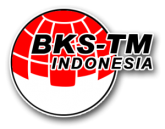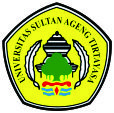Design and Manufacturing of Bottle Roller Machine for Laboratory Leaching Process by Using Recycled Materials
Abstract
Bottle roll is the equipment used for laboratory metal leaching tests. Leaching is a
widely used metal extraction process by dissolving metal from ore using certain
chemical reagents. The working principle of the bottle roll is to stir the bottle filled with
a suspension sample and place it on rolls that rotate horizontally. In this research, the
rotating rolls were driven by a recycled water pump electric motor which is
transmitted using a pulley and belt. The research objective is to create a bottle roll
machine that is practically easy and safe to carry out the leaching test or any other tests
that involve agitation, especially for process engineering students. The performance
validation of the equipment was done by conducting some leaching tests using the
manufactured bottle roll to determine the consistency of the roll rotation, as leaching
tests are generally done for a quite long period, usually 24 hours continuously. The
sand sample was sieved into 100 mesh of particle size and then mixed with water to
make a suspension. The suspensions were put into 2.5 liters of used glass chemical
bottles and 1 liter HDPE plastic bottles with various diameters of 14 Cm, 12 Cm, and 8
Cm. The results showed that the machine could perform the leaching test at best in
HDPE bottles with an average of 31 RPM of rotation speed tested for 24 hours.
Keywords
Full Text:
PDFReferences
L. Castro, M. L. Blázquez, and J. Á. Muñoz, “Leaching/bioleaching and recovery of metals,” Metals (Basel)., vol. 11, no. 11, pp. 10–12, 2021, doi: 10.3390/met11111732.
W. Astuti, T. Hirajima, K. Sasaki, and N. Okibe, “Comparison of effectiveness of citric acid and other acids in leaching of low-grade Indonesian saprolitic ores,” Miner. Eng., vol. 85, pp. 1–16, 2016, doi: 10.1016/j.mineng.2015.10.001.
K. Prokhorov, “Influence of agitation leaching conditions to the behavior of gold in solution,” E3S Web Conf., vol. 56, pp. 1–5, 2018, doi: 10.1051/e3sconf/20185603010.
G. Senanayake and G. K. Das, “A comparative study of leaching kinetics of limonitic laterite and synthetic iron oxides in sulfuric acid containing sulfur dioxide,” Hydrometallurgy, vol. 72, no. 1–2, pp. 59–72, 2004, doi: 10.1016/S0304-386X(03)00132-4.
F. Mohammadreza, N. Mohammad, and S. S. Ziaeddin, “Nickel extraction from low grade laterite by agitation leaching at atmospheric pressure,” Int. J. Min. Sci. Technol., vol. 24, no. 4, pp. 543–548, 2014, doi: 10.1016/j.ijmst.2014.05.019.
R. T. Jayanti, “Proceedings of the 2 nd Faculty of Industrial Technology International Congress International Conference Effect of Agitation Speed and Leaching Time for Nickel Recovery of Morowali Limonite Ore in Atmospheric Citric Acid Leaching,” no. July, pp. 1–5, 2020, doi: 10.13140/RG.2.2.16147.71207.
S. M. Seyed Ghasemi and A. Azizi, “Alkaline leaching of lead and zinc by sodium hydroxide: Kinetics modeling,” J. Mater. Res. Technol., vol. 7, no. 2, pp. 118–125, 2018, doi: 10.1016/j.jmrt.2017.03.005.
J. MacCarthy, A. Nosrati, W. Skinner, and J. Addai-Mensah, “Atmospheric acid leaching mechanisms and kinetics and rheological studies of a low grade saprolitic nickel laterite ore,” Hydrometallurgy, vol. 160, pp. 26–37, 2016, doi: 10.1016/j.hydromet.2015.11.004.
M. C. Cetin, N. Emre Altun, M. U¨mit Atalay, and K. Bu¨yu¨ktanir, “Bottle roll testing for cyanidation of gold ores: Problems related to standardized procedures on difficult-to-process ores,” Proc. World Congr. Mech. Chem. Mater. Eng., no. June, 2017, doi: 10.11159/mmme17.148.
E. A. Oraby, J. J. Eksteen, and G. M. O’Connor, “Gold leaching from oxide ores in alkaline glycine solutions in the presence of permanganate,” Hydrometallurgy, vol. 198, no. October, p. 105527, 2020, doi: 10.1016/j.hydromet.2020.105527.
F. Hedjazi and A. J. Monhemius, “Industrial application of ammonia-assisted cyanide leaching for copper-gold ores,” Miner. Eng., vol. 126, no. July, pp. 123–129, 2018, doi: 10.1016/j.mineng.2018.07.005.
J. J. K. Mbayo, H. Simonsen, and S. Ndlovu, “Improving the gold leaching process of refractory ores using the Jetleach reactor,” Miner. Eng., vol. 134, no. February, pp. 300–308, 2019, doi: 10.1016/j.mineng.2019.02.003.
J. Wu, J. Ahn, and J. Lee, “Gold deportment and leaching study from a pressure oxidation residue of chalcopyrite concentrate,” Hydrometallurgy, vol. 201, no. October 2020, p. 105583, 2021, doi: 10.1016/j.hydromet.2021.105583.
A. M. Nazari, A. Ghahreman, and S. Bell, “A comparative study of gold refractoriness by the application of QEMSCAN and diagnostic leach process,” Int. J. Miner. Process., vol. 169, pp. 35–46, 2017, doi: 10.1016/j.minpro.2017.10.007.
Y. Liu et al., “Study on hydrometallurgical process and kinetics of manganese extraction from low-grade manganese carbonate ores,” Int. J. Min. Sci. Technol., vol. 24, no. 4, pp. 567–571, 2014, doi: 10.1016/j.ijmst.2014.05.022.
S. Oediyani, U. Ariyanto, and E. Febriana, “Effect of concentration, agitation, and temperature of Pomalaa limonitic nickel ore leaching using hydrochloric acid,” IOP Conf. Ser. Mater. Sci. Eng., vol. 478, no. 1, 2019, doi: 10.1088/1757-899X/478/1/012013.
DOI: http://dx.doi.org/10.36055/fwl.v0i0.14081
Refbacks
- There are currently no refbacks.







